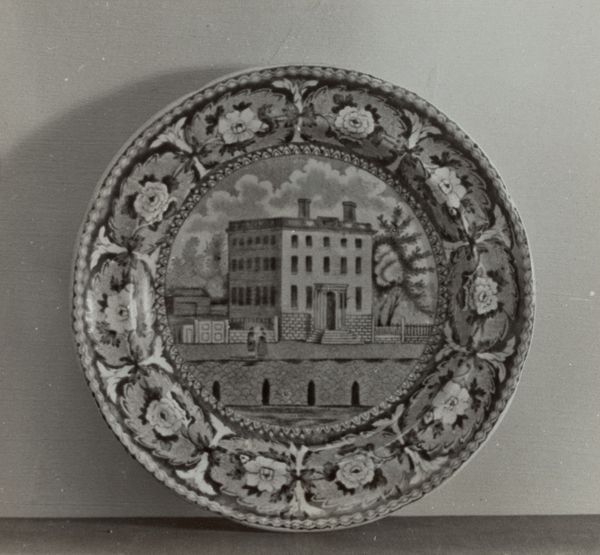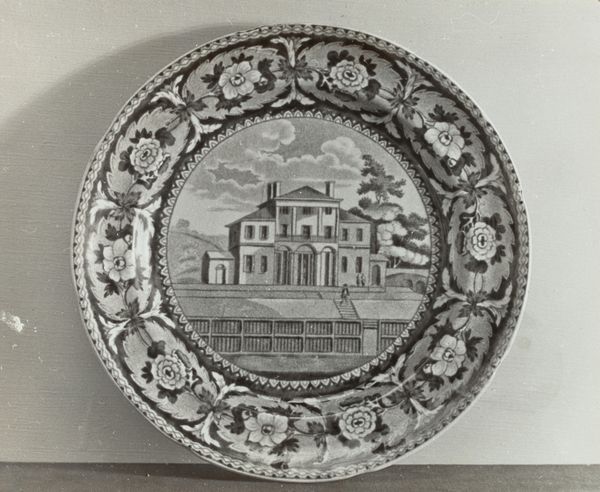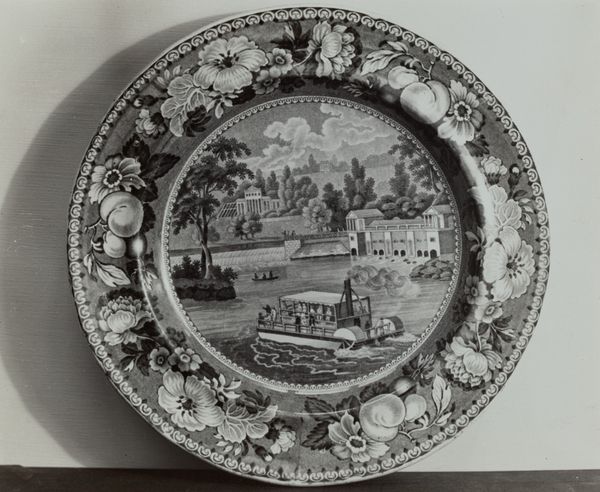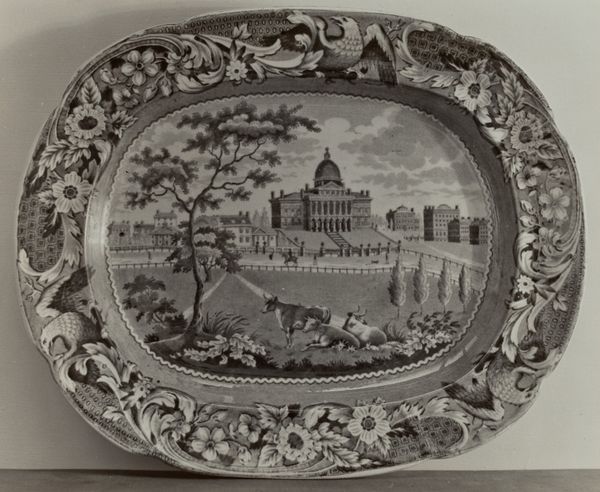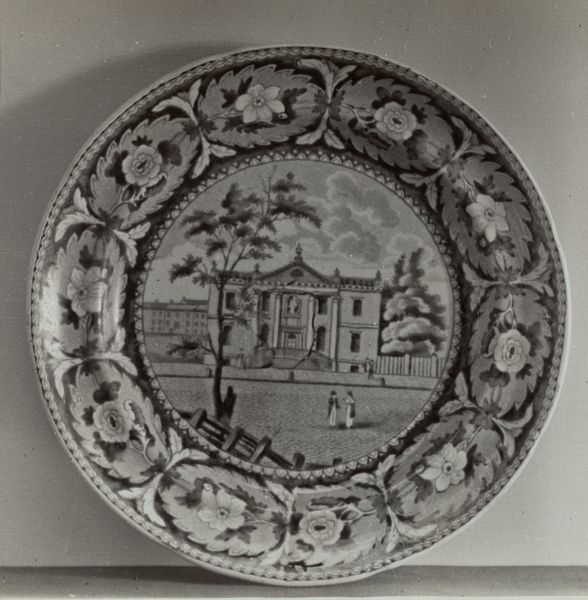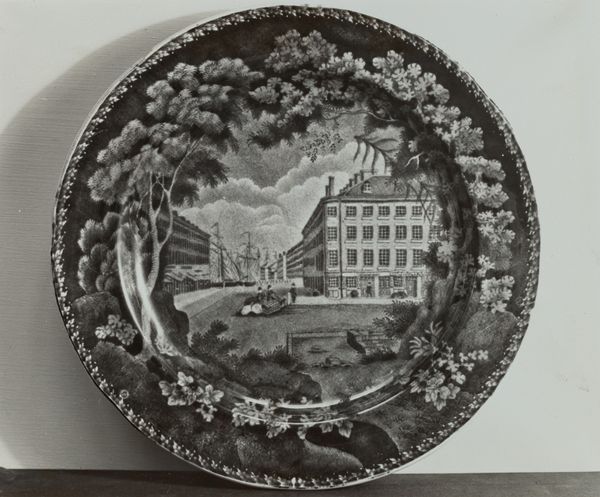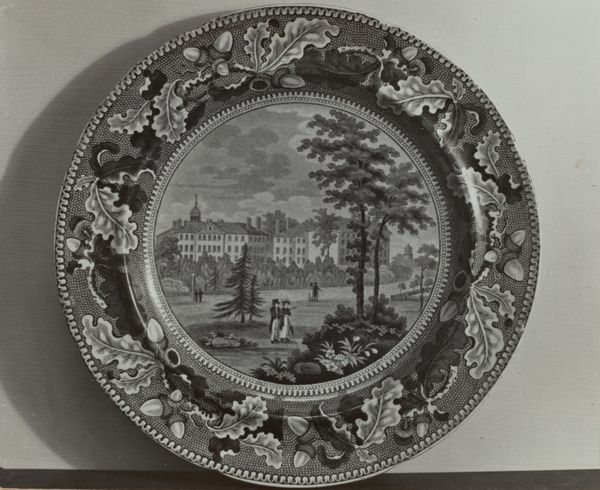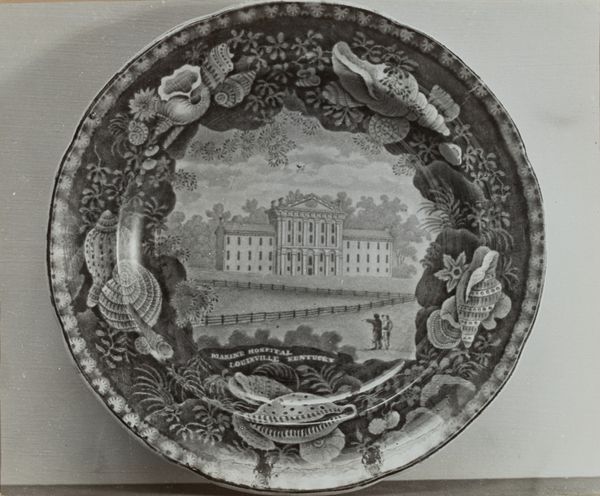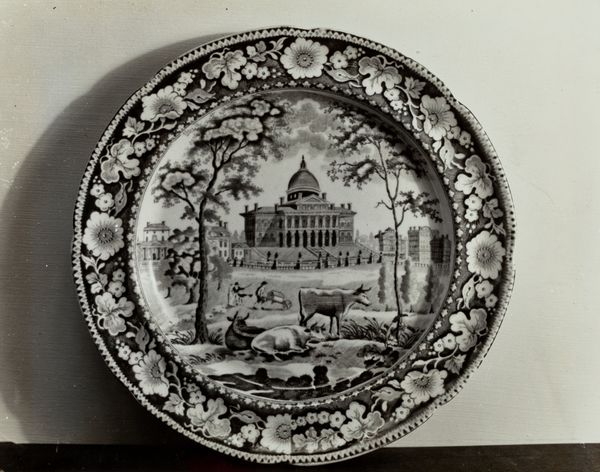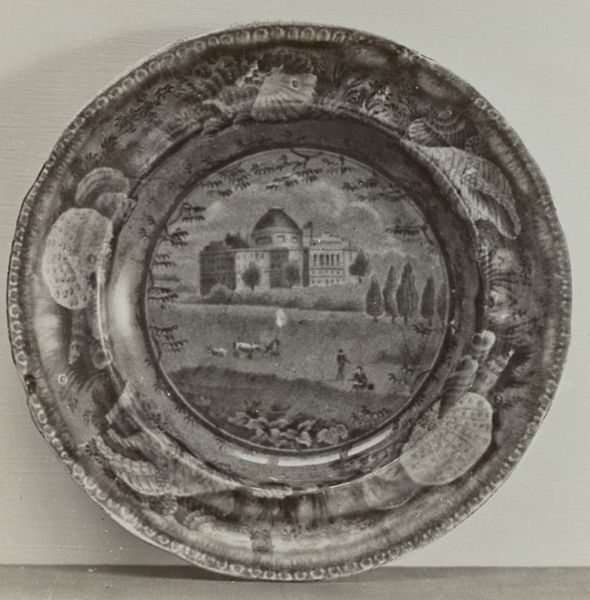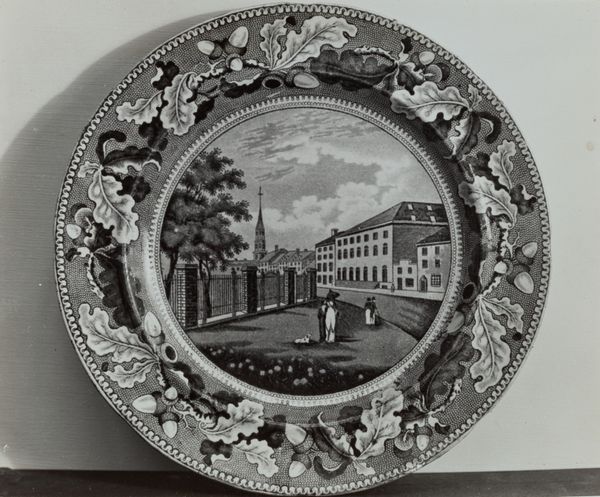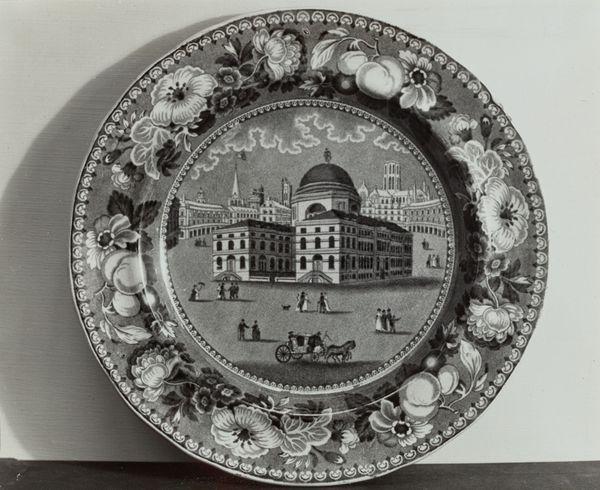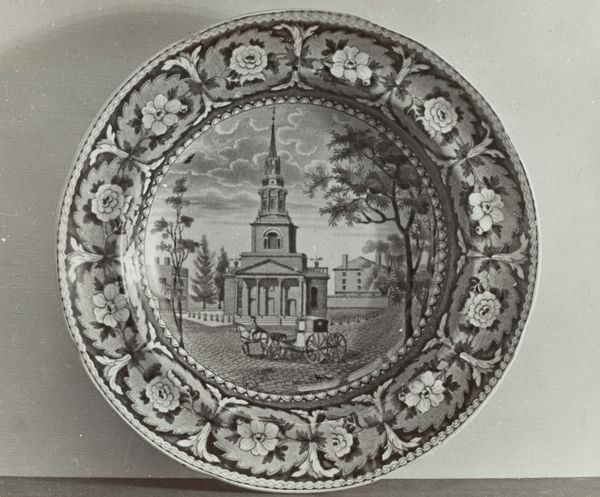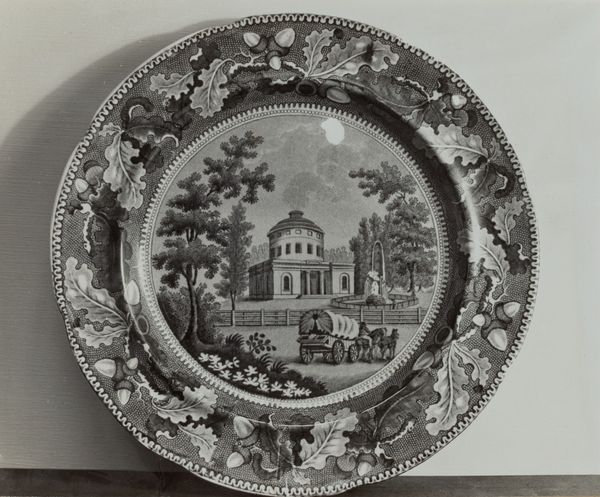
drawing, print, ceramic, earthenware
#
drawing
# print
#
sculpture
#
ceramic
#
earthenware
#
ceramic
#
cityscape
Dimensions: overall: 20.3 x 25.4 cm (8 x 10 in.) Original IAD Object: 9 7/8" in diameter
Copyright: National Gallery of Art: CC0 1.0
Curator: This is a plate from around 1936 depicting New York's City Hall. The piece, rendered in earthenware with drawing and print techniques, provides a fascinating window into civic pride during the period. Editor: It strikes me as surprisingly melancholic. Despite the familiar civic architecture, the monochromatic palette and somewhat blurry rendering gives it a feeling of something lost or fading. Curator: That sense of melancholy might be tied to the socio-economic realities of the time. Mass production of commemorative earthenware often reflects a need to generate income through accessible and consumable goods, revealing labor practices inherent in its production. Editor: Precisely. The choice to depict City Hall also suggests a particular relationship to power and authority. I wonder who the intended consumer was and how their identity shaped their interpretation of such imagery during the Depression era. The scene with figures standing near the building hints to themes of access and belonging. Curator: Exactly. The mass-produced nature allowed ordinary citizens access to imagery usually reserved for the elite. Focusing on the material choices allows us to see the connection between consumerism, artistry, and the everyday experience of city dwellers during the '30s. Editor: It certainly disrupts the notion of high versus low art. Consider the decorative floral border, which simultaneously elevates the image and commodifies it. Does the choice of a plate format contribute to a domestic narrative or reinforce a social hierarchy through the implied act of display or use? Curator: An important point. This is about the fusion of practicality and aspiration, reflecting broader social stratifications of its time. Appreciating the process is key to understanding this. Editor: Yes, viewing this plate necessitates examining cultural narratives of power, class, and how such symbolic depictions were internalized during the complexities of that time. It provokes a deep questioning of historical moments. Curator: Absolutely. Thank you. Considering all of these intricate connections enriches our understanding and expands our interpretations. Editor: Indeed. Thank you, that was truly enlightening!
Comments
No comments
Be the first to comment and join the conversation on the ultimate creative platform.
